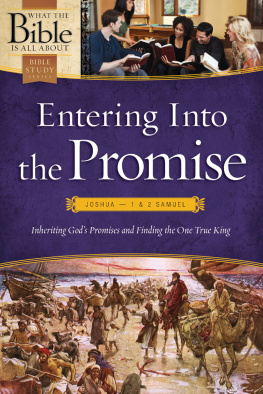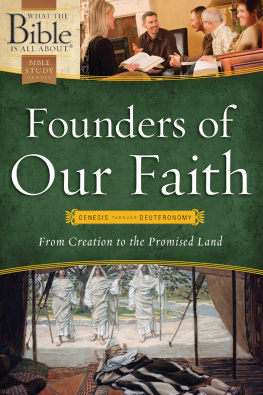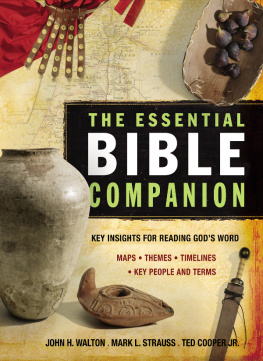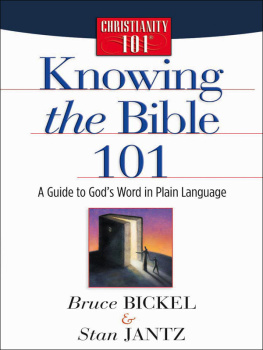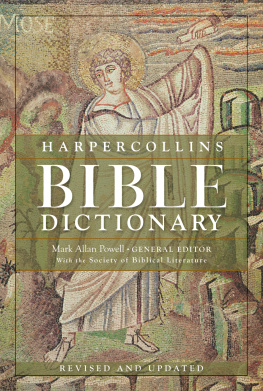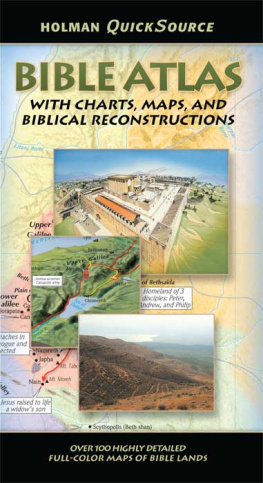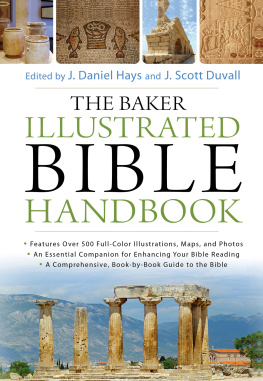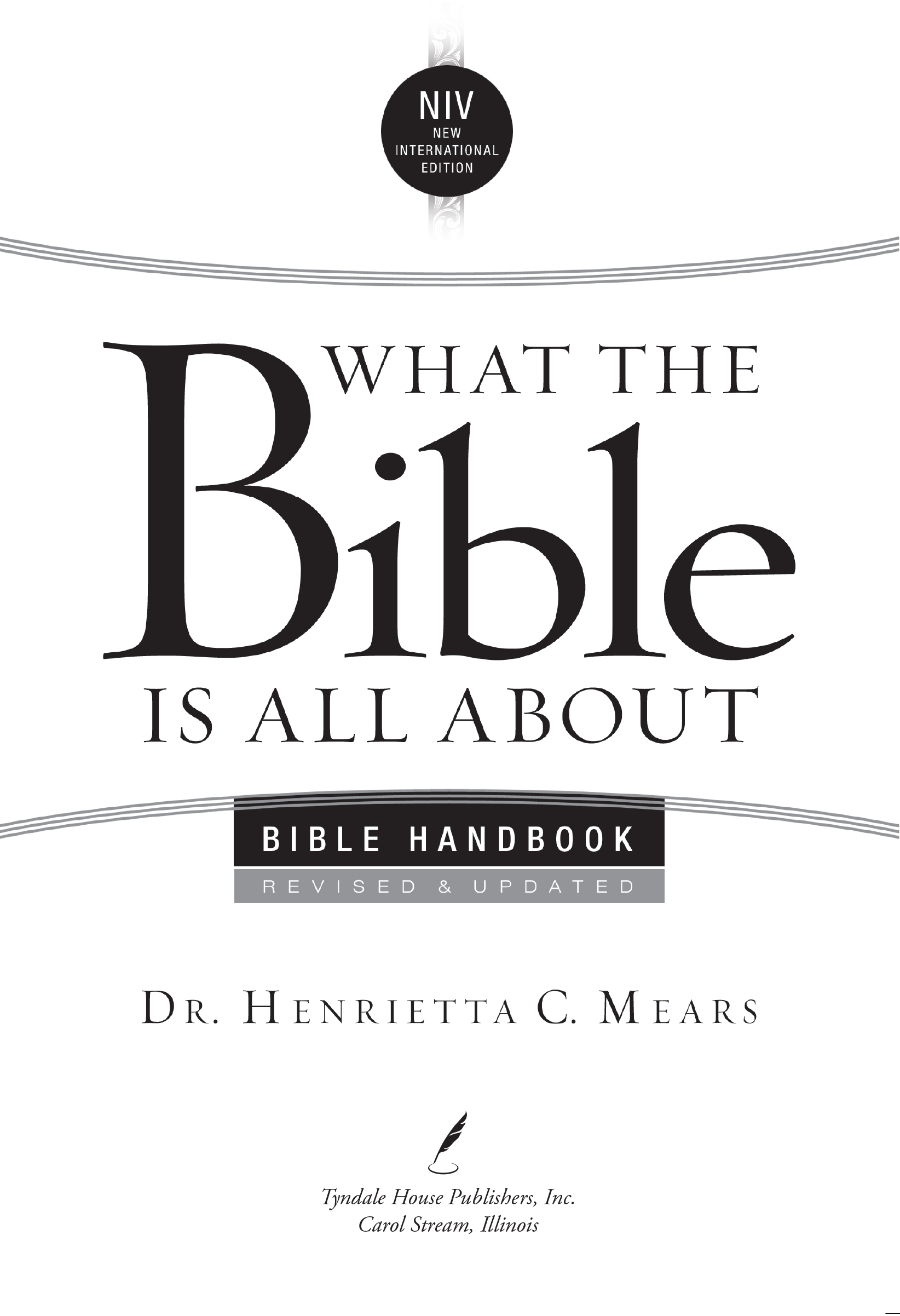What the Bible Is All About
Visit Tyndale online at www.tyndale.com.
Copyright 1953, 2011 by Gospel Light. Copyright assigned to Tyndale House Publishers, Inc., 2015. All rights reserved.
All Scripture quotations, unless otherwise indicated, are taken from the Holy Bible, New International Version, NIV. Copyright 1973, 1978, 1984, 2011 by Biblica, Inc. Used by permission. All rights reserved worldwide.
Other versions used are:
AMPScripture taken from the Amplified Bible, copyright 1954, 1958, 1962, 1964, 1965, 1987 by The Lockman Foundation. Used by permission.
CEVScripture taken from the Contemporary English Version, copyright 1991, 1992, 1995 by American Bible Society. Used by permission.
The Douay-Rheims Bible, 1899 American Edition of the John Murphy Company, Baltimore, Maryland.
MoffattThe Bible: James Moffatt Translation by James A. R. Moffatt. Copyright 1922, 1924, 1925, 1926, 1935 by Harper Collins San Francisco. Copyright 1950, 1952, 1953, 1954 by James A. R. Moffatt.
NASBScripture taken from the New American Standard Bible, copyright 1960, 1962, 1963, 1968, 1971, 1972, 1973, 1975, 1977, 1995 by The Lockman Foundation. Used by permission.
TYNDALE, Tyndales quill logo, and What the Bible Is All About are registered trademarks of Tyndale House Publishers, Inc.
The Library of Congress has cataloged the original edition as follows:
Mears, Henrietta C. (Henrietta Cornelia), 1890-1963
[What the Bible is all about]
What the Bible is all about handbook / Henrietta C. Mears.
p. cm.
Includes index.
Originally published: What the Bible is all about. Ventura, Calif:
Regal Books, c1999.
ISBN 978-0-8307-5966-8 (NIV)
1. BibleCriticism, interpretation, etc. I. Title
BS511.3 .M43 2002
220.3dc21
Build: 2015-12-02 14:18:51
Contents

Foreword
Dr. Billy Graham
Millions of people today are searching for a reliable voice of authority. The Word of God is the only real authority we have. His Word sheds light on human nature, world problems and human suffering. But beyond that, it clearly reveals the way to God.
The message of the Bible is the message of Jesus Christ, who said, I am the way, the truth, and the life (John 14:6, KJV). It is the story of salvation; the story of your redemption and mine through Christ; the story of life, of peace, of eternity.
Our faith is not dependent upon human knowledge and scientific advance but upon the unmistakable message of the Word of God.
The Bible has a great tradition and a magnificent heritage. It contains 66 books written over a period of several hundred years by many different men. Yet the message, divinely inspired by the Holy Spirit, is clear throughout. The 66 books become one.
The Bible is old, yet it is ever new. It is the most modern book in the world today. There is a false notion that a book as ancient as the Bible cannot speak to modern needs. People somehow think that in an age of scientific achievement, when knowledge has increased more in the past 25 years than in all preceding centuries put together, this ancient Book is out-of-date. But to all who read and love the Bible, it is relevant for our generation.
It is in the Holy Scriptures that we find the answers to lifes ultimate questions: Where did I come from? Why am I here? Where am I going? What is the purpose of my existence?
One of the greatest needs in the Church today is to come back to the Scriptures as the basis of authority and to study them prayerfully in dependence on the Holy Spirit. When we read Gods Word, we fill our hearts with His words, and God is speaking to us.
William Lyon Phelps, called the most beloved professor in America, and one-time president of Yale University, made the oft-quoted statement, I thoroughly believe in a university education for both men and women; but I believe a knowledge of the Bible without a college course is more valuable than a college course without the Bible.
One of the greatest tragedies today is that, although the Bible is an available, open book, it is a closed book to millionseither because they leave it unread or because they read it without applying its teachings to themselves. No greater tragedy can befall a person or a nation than that of paying lip service to a Bible left unread or to a way of life not followed.
The Bible, the greatest document available for the human race, needs to be opened, read and believed. One survey indicated that only 12 percent of the people who said they believe the Bible actually read it every day; 34 percent read it only once a week, and 42 percent read it only once in a great while.
This book, What the Bible Is All About, will help make the reading and study of Gods Word interesting, challenging and useful. We commend it to you.
Preface
William T. Greig Jr.
Former Chairman, Gospel Light
In the early 1950s my wife, Doris, and I were invited to teach the high school class in a small Baptist church in a suburb of Minneapolis, Minnesota. We were newly married and accepted the challenge with some trepidation. We agreed we would do better if we divided the group. I would teach the boys and Doris would teach the girls.
Doris and I both wanted to understand the Bible better. Doris had become a believer during a Billy Graham meeting at a Youth for Christ conference about two years earlier. I was fortunate to have been brought up in a Christian home and had been taught the Word by my parents since childhood. Yet we each hungered to know more of the Word. We also were aware that the kids in Sunday School knew precious little of Bible truth. So we decided to tackle the daunting task of teaching each of our classes through the entire Bibleall 66 booksin one year, 42 weeks. We secured a high school course then published by Gospel Light called the Scripture Panorama Series.
Dr. Henrietta C. Mears, founder of Gospel Light, authored this classic course. She believed firmly that no young person in her Sunday School should be able to say what a young college man had told her many years before: If I had to pass a test in the Bible, I would absolutely flunk! So she wrote this crash course for people who knew little if anything about the Bible but who wanted to know enough to understand the essential message of each of the books as they studied or read devotionally. The central theme of the entire Word of God is His dealings with His people and His provision of salvation through faith in Jesus Christ the Messiahpromised throughout the Old Testament and revealed fully in the New Testament.
Doris and I learned much that year, and so did our classes. It was intense but rewarding. Nothing of great value is ever accomplished without consistent effort invested on our part. You only get out what you put in. So it was with this course. It was a spiritual growing experience for all, and it helped us both to grow in grace and in our relationship to Jesus Christ and to each other, not to mention our class members.
In the mid-1950s, Richard Woike, president of the Christian Business Mens Committee, challenged me to read through the Bible every year. He would buy a new Bible each year on his birthday and read through it from Genesis through Revelation in one year. I liked the idea but got bogged down in Leviticus and Numbers, as many do. So I developed my own plan, which I found particularly rewarding. I began in Genesis, Job and Matthew and read a page or two of each section every day. This took me through the entire Bible in one year. It was rewarding particularly having this book,


